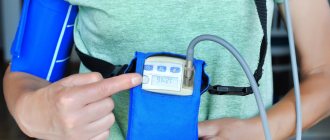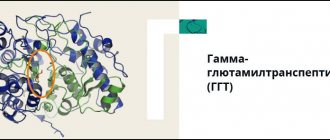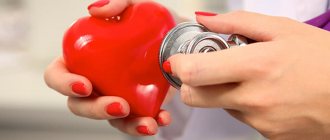How addiction is formed
Anyone can become addicted to alcohol: you don’t have to drink strong alcohol to do so. The body reacts to any ethanol-containing drink - alcohol poisoning occurs. Over time, physical cravings develop. The blood alcohol level is the same whether it is 100 grams of vodka or 2 liters of beer.
For each person, the maximum dose of ethanol is individual. The manifestation of the disease is loss of control over drinking. At the same time, there is no critical perception of one’s state when drinking alcohol.
Over time, natural biochemical processes change. Physical cravings are formed when a person constantly needs ethanol. However, this does not happen immediately, but after the onset of psychological dependence. Initially, drinking is needed to overcome complexes or in an attempt to cope with problems or relieve stress. Over time, such a solution becomes the only acceptable one.
Without the opportunity to drink, a person’s mood and well-being worsen. Therefore, the frequency of drinking alcoholic beverages and the dose of ethanol are increasing. The craving for alcohol becomes out of control and pathological. All new doses are needed to overcome withdrawal symptoms, while the pleasure from drinking becomes less and less. The emotional reaction to alcohol-containing drinks changes.
Remember that the reliability of the results obtained depends on compliance with these recommendations!
General recommendations:
- The following tests are taken strictly on an empty stomach (at least 12 hours after the last meal): - general clinical blood test; determination of blood group and Rh factor; - biochemical tests (glucose, cholesterol, triglycerides, ALT, AST, etc.); — study of the hemostasis system (APTT, prothrombin, fibrinogen, etc.); - hormones; - tumor markers.
- Taking water does not affect blood counts, so you can drink water.
- Blood counts can change significantly throughout the day, so we recommend taking all tests in the morning. All laboratory norms are calculated for morning indicators.
- One day before donating blood, it is advisable to avoid physical activity, drinking alcohol and significant changes in diet and daily routine.
- Two hours before donating blood for testing, you must refrain from smoking.
- For laboratory tests of hormones (FSH, LH, prolactin, estriol, estradiol, progesterone), blood should be donated only on the day of the menstrual cycle that was prescribed by the doctor.
- All blood tests are done before radiography, ultrasound and physiotherapeutic procedures.
Preparing for tests
| Methodology | Preparation |
|
|
|
|
|
|
|
|
|
|
|
|
|
|
|
|
|
|
|
|
|
|
|
|
|
|
|
|
|
|
|
|
|
|
|
|
|
|
|
|
Daily urine for:
|
|
Analyzes during the day
Regardless of meal | After 3-4 hours of fasting |
|
|
| Type of study: | Factors distorting research results: | ||||
| At least 12 hours fasting | Possible without fasting | Physical load - overestimates the indicator | Fear when taking tests increases index | Take analysis strictly from 7 to 10 am | |
| Biochemical studies: | |||||
| Glucose | + | + | + | ||
| Glucose tolerant test (1) | + | + | |||
| Bilirubin (2) | + | ||||
| Creatinine | + | ||||
| Iron | + | ||||
| Uric acid (3) | + | ||||
| Hormones: | |||||
| adrenalin | + | + | |||
| ACTH | + | + | |||
| glucagon | + | ||||
| cortisol | + | + | |||
| norepinephrine | + | + | |||
| parathyroid hormone | + | + | |||
| prolactin | + | + | |||
| STH (somatotropic hormone | + | ||||
| TSH (thyroid stimulating hormone) | + | + | + | ||
| Insulin | The indicator is decreasing | ||||
| Blood tests for infections: | |||||
| Syphilis | + | ||||
| Antigen hepatitis B | + | ||||
| Antibodies to viral hepatitis | + | ||||
| Antibodies to rubella, cytomegalovirus | + | ||||
| HIV | + | ||||
The effect of daily alcohol consumption on the body
Alcohol-containing products tend to cause cravings, which are very difficult to overcome in the future. The composition contains many harmful impurities that have a detrimental effect on the entire body. Gradually, tissues and cells of almost all systems are destroyed.
Ethyl alcohol, when used systematically, causes both physiological and social damage. The consequences manifest themselves in the form of serious damage to all body systems and the development of chronic diseases.
Physiological changes
When ethanol gets inside, it interacts with nervous tissue: its protection is destroyed. Just 1 liter of beer or a bottle of wine leads to serious consequences - the death of up to 10 thousand brain cells that cannot be restored. This subsequently affects mental activity and general health.
Ethyl alcohol also disrupts the conduction of impulses through nerve cells. For the central nervous system this manifests itself as:
- problems in the emotional sphere;
- the appearance of speech defects;
- disturbances in the functioning of the organs of vision and hearing;
- problems with coordination, etc.
Alcohol has an effect on the cardiovascular system. The tissues of organs are connective tissue, the elasticity of which is lower. This affects the functioning of the heart and blood vessels: problems with blood pressure appear, and there is a violation of the contractile function of the myocardium.
The whole body suffers, there are no exceptions. Ethyl alcohol harms the walls of the stomach, so the risk of ulcer formation is high. There is a change in acidity, which also negatively affects the digestion process.
Frequent dizziness and headaches are also a common consequence of alcoholism.
External signs of a drinking person
The visual manifestations of a drunkard do not immediately become noticeable. Signs begin to develop gradually. With each subsequent stage of development of the disease, the marks on the face of an alcoholic become more and more pronounced. Most of them are reflected in appearance:
- due to improper outflow of bile, the whites of the eyes and skin become yellow;
- the face turns red as blood pressure rapidly rises after drinking alcohol;
- the skin becomes covered with pimples and rashes;
- The area under the eyes suffers - so-called bags are formed, spoiling the appearance.
Dry epidermis and accelerated appearance of wrinkles are also signs of people who drink. Often the face is covered with a thin vascular network.
The nose takes on a burgundy-red hue. Much changes in facial expressions: the muscles of the mouth relax excessively, the forehead tenses. As a result: the face takes on a rather strange expression, as if always slightly surprised.
People who drink lose weight and their skin looks unhealthy. In this case, swelling of the face is characteristic. These are the signs that will help you recognize a drunkard at first sight.
Mental changes
Long-term use of ethanol-containing drinks is fraught with significant mental disorders. There is a high risk of developing alcoholic hallucinosis. Often patients hear voices that insult them, say unpleasant things, and are often threatening in nature.
The most common disorder is delirium, otherwise known as delirium tremens. With hallucinosis there is no impairment of consciousness. The patient continues to navigate in time. In some patients, the disease becomes chronic.
Personality degradation is a fairly common accompaniment of addiction. Intellectual abilities and stress resistance are significantly reduced. The drinker is secretive and taciturn. An ever-increasing dose of alcohol negatively affects the ability to adequately perceive reality. In the morning, the patient does not remember what happened the day before while he was aggressive or unconscious.
Impact on family relationships
An alcohol abuser destroys both his life and his family. Alcoholism is not compatible with family life. For the patient, the environment becomes an obstacle on the path to addiction. The social role of a person is changing dramatically, as is psychology. Close people suffer, as the person becomes weak-willed and aggressive. The wife of an alcoholic and his children have to endure a lot. The drinker stops fulfilling his family responsibilities and brings a lot of trouble to his loved ones. Inappropriate actions, changeability in mood, hostility - this does not have the best effect on relationships between people. The rudeness and irritability of an alcoholic primarily affects those closest to him - his wife and children. The progression of the disease further complicates the situation. This often leads to discord within the family and subsequent divorce.
The well-being of children is at risk. They grow up in an unhealthy environment, which affects their psyche. All the patient's immediate circle suffers from binge drinking. Female alcoholism is no less dangerous. A sick woman is not able to fully perform the functions of a mother. The disease destroys women's nature. Long-term alcohol abuse is fraught with serious changes in the psyche. This is especially dangerous for children and their health.
Psychosis and hysteria become constant companions of an alcoholic. Another problem is codependency. The suffering felt by family members is a direct consequence of the drinker’s actions. The well-being of others deteriorates in proportion to the increase in the dose consumed by the patient. Everyone is stressed: spouse, children.
General analysis
Exposure to alcohol can distort results in the following ways :
- destroy red blood cells,
- increase cholesterol levels sometimes by 80%,
- reduce hemoglobin levels, as the concentration of red blood cells also decreases.
If you drink alcohol immediately before this test, then the greatest likelihood is that the number of red blood cells (red blood cells that transport oxygen to all organs or tissues and the return transport of carbon dioxide) will be reduced.
Alcohol dissolves the membranes of red blood cells, which prevents their natural random movement and repulsion is reduced. Red blood cells begin to stick together. Their concentration in plasma falls, which leads to a decrease in hemoglobin levels. The clumping of red blood cells leads to the formation of blood clots and a decrease in blood microcirculation in the vessel.
The blood becomes thicker after the alcohol gets inside. Its ability to penetrate through the lumens of the capillaries is reduced due to the appearance of clots. This situation is dangerous to the health and life of people and prevents a complete study of the composition of the blood.
In the liver, under the influence of alcohol, lipid production decreases. This reduces the characteristics of the plasma. Such indicators play a major role during the period when the patient is being prepared for surgery. Accurate analysis is necessary to monitor the patient’s health when he has suffered from a serious infectious disease or during the healing of large wound surfaces.
Blood tests taken less than 12 hours after drinking alcohol can only accurately show general intoxication. A decrease in hemoglobin shows only megaloblastic anemia. But the doctor may refuse to make a diagnosis, citing his patient’s recent drinking.
How long do alcoholics live?
The life expectancy of those who suffer from alcoholism is significantly reduced. 20% of patients live more than 50 years. Acute heart failure often causes early death in drunkards under 40 years of age. A dangerous habit is fraught with a significant deterioration in quality and a decrease in life expectancy. The risk of leaving this world prematurely increases. There is no clear answer to the question of how long alcoholics live. Much depends on the age at which a person developed a harmful addiction, whether there are associated problems, etc. That is, the life expectancy of a drinker is determined by the strength of the body. Sudden deaths before age 30 are common. The average life expectancy is 48-55 years. However, this is under fortunate circumstances. 25% of addicted people do not live to reach the specified age mark.
Only by stopping drinking in a timely manner does a person suffering from an illness get a chance to prolong their life. However, in many cases, medical assistance cannot be avoided. Then a person will be able to cope with addiction and get rid of addiction.










